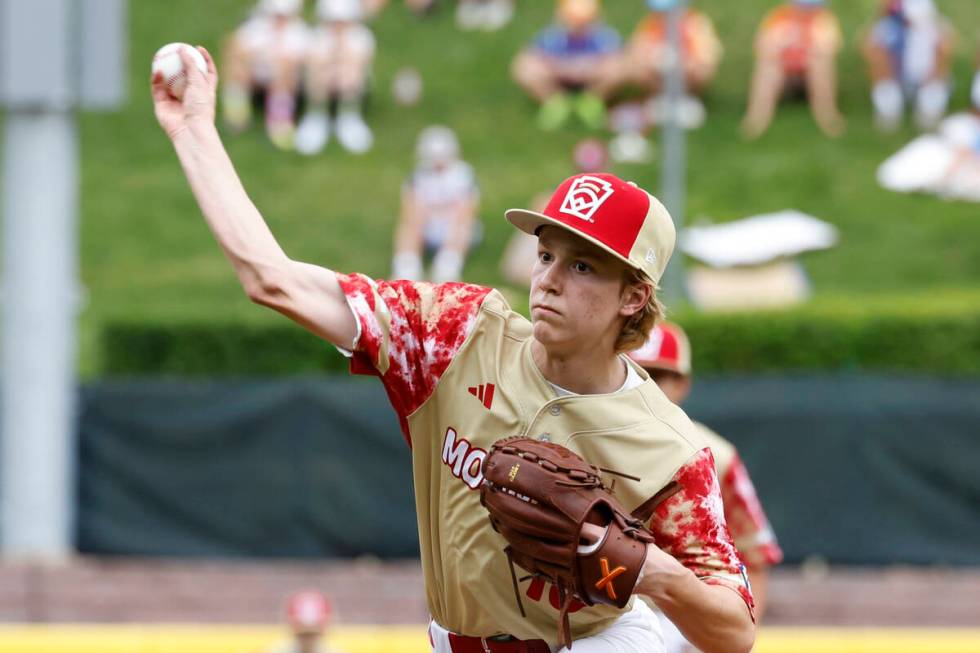Graney: Henderson All-Stars’ success about more than its ace

WILLIAMSPORT, Pa. — It’s a pretty straightforward formula in tournament baseball.
Each team that has advanced this far in the Little League World Series almost always has an ace pitcher, a kid who at any given time can shut down an opponent’s bats and claim victory.
On the first day of games here, only 12 runs were scored. You get the idea.
It’s also a major reason the Henderson All-Stars qualified for the Series.
But they have something beyond their No. 1 starter Nolan Gifford. Those in the 2 and 3 and even 4 spots in the rotation have stood on the mound at Lamade Stadium and more than executed.
Those like Logan Levasseur and David Edwards and Jaxson McMullin and Liam Wells.
Consider: Henderson is 2-1 in the Series and has allowed six runs in 15 innings. It has allowed just 10 hits.
It hopes to continue producing such numbers Tuesday when facing the Southeast Region champion from Nolensville, Tennessee, at noon on ESPN.
Gifford, who hasn’t pitched since a 3-1 loss to Rhode Island on Wednesday, will get the start.
Build a staff
Having quality pitching depth was central in manager Ryan Gifford’s mind when constructing the roster, knowing he’d need a staff deep enough to manage several games over the course of a week or two. He said some of Henderson’s best pitchers haven’t even thrown here yet.
There are two ways to look at handling a Little League pitcher: You embrace the idea of allowing your starter to flirt with or reach the 85-pitch limit and then take the required four days rest or you limit him to 35 or so pitches so he can throw again a day or two later.
Ryan Gifford prefers the former approach. It’s the correct one.
Kids aren’t built like Major League relievers. They’re not wired that way. Taxing an arm on consecutive or every other day can be a bad recipe.
“I think throwing a decent amount of pitches is the better way of doing things from stuff I’ve studied and learned,” Ryan Gifford said. “That’s just my take. I try not to (limit) a kid’s pitches as much as possible. I think the (85-pitch limit) and rest is imperative. I’d rather put a kid out there and let him throw.”
But throw what?
Curves at 12?
You can make the argument — and plenty have — that 12-year-olds shouldn’t yet be trying to master a curveball, that such a pitch puts too much stress on an arm.
But so too does throwing so often, a problem that can arise with kids nowadays playing year-round ball. That can just as easily injure an arm as one specific pitch.
Henderson kids almost to a player have just two pitches they throw and a majority of them called by Gifford are fastballs. Smart move. Some also throw a change-up. Some throw a curve.
“You know, if you have a good fastball and off-speed pitch, you can be deadly at this level,” Ryan Gifford said. “The reaction time from a really good fastball at 46 feet is like what Major Leaguer hitters are facing at 60 feet. If you locate a fastball correctly at this level, you can win a lot of games. That’s pretty much what most of our guys can do.”
It’s paying off here. They hope it continues doing so.
Ed Graney, a Sigma Delta Chi Award winner for sports column writing, can be reached at egraney@reviewjournal.com. He can be heard on “The Press Box,” ESPN Radio 100.9 FM and 1100 AM, from 7 to 10 a.m. Monday through Friday. Follow @edgraney on X.